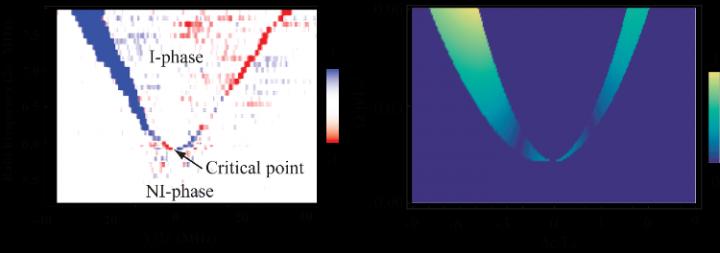
Credit: Dong-Sheng Ding, Hannes Busche, Bao-Sen Shi, Guang-Can Guo, and Charles S. Adams
The Group of Academician GUO Guangcan has made significant progress in the research of Rydberg Atom: Prof. SHI Baosen, Prof. DING Dongsheng and Prof. Charles Adams and others have carried out an experimental simulation of many-body self-organization based on Rydberg Atoms, the main results of which were published on April 29, 2020 in the famous journal of Physics Review X.
There are many phenomena in nature that follow the evolutionary laws of many-body physics, how trees grow, how crystals spontaneously form, how viral cells accumulate and eventually develop into viruses, and how social networks interact to infect humans, these new states due to many-body interaction obey a kind of self-organization law. Self-organization is a process in which chaotic systems form a dissipative structure when they are identified randomly, examples include non-equilibrium phase transitions in physics, molecular self-assembly and autocatalytic networks in chemistry, spontaneous folding of proteins in biology and herding behavior in animals, cellular automaton in computer science, and areas such as sociology, economics, Behavioral finance, and anthropology such as critical clustering and groupthink. A particularly interesting and important phenomenon is the self-organized criticality (SOC) behavior: a system is attracted to a critical point at which the behavior of the system changes dramatically. SOC is at the heart of many complex examples in nature, such as forest fires and the spread of viruses. Therefore, the study of SOC is of great significance to simulate the complex many-body problem in nature.
The atoms in the Rydberg atom are much more strongly interacting with each other than with the atomic gas, and the high polarizability allows the dipole interactions between the atoms to be in the range of several microns long. The strong interaction enables us to observe the non-equilibrium phase transition in the ensemble. The traditional method is used to detect non-equilibrium phase transitions with an accuracy of several hundred MHz. Ding et al. have proposed a new method to detect the non-equilibrium phase transition by using the electromagnetically induced transparency effect of the Rydberg atom. Compared with the traditional method, the frequency resolution is improved by two orders of magnitude. Further, they measured the complete phase diagram, observed the dynamic behavior near the critical point, and revealed previously unobserved optical response and time-domain spectral properties in non-equilibrium dynamics under weakly driven light. Figure 1 shows the phase diagram they obtained from the spectral signal they scanned. According to the phase diagram, the non-interacting phase and interacting-phase can be clearly distinguished. A phase transition occurs when the average number of Rydberg atom in an interaction reaches a critical value and the system transitions from non-interacting phase to interacting-phase (figure 2) and vice versa. Because the sensitivity of the measurements is in the MHz range, they can detect the dynamical evolution of the system near the critical point and find that the system evolution obeys a power-law function. The experimental results are predicted by the forest fire model, which opens up a new way to study the basic physics of many-body dynamics. The referees show very excellent evaluations: “This is probably the most detailed and elaborate study of Rydberg Atom Behavior in Rydberg vapor reported so far. ” “their results are impactful enough, potentially also beyond the Rydberg community, to merit publication in PRX. ” “their findings will have significant implications not only for the Fort Reed field, but for other fields as well, making them worthy of publication in PRX. ” “The quality of The presentation is very high. All in All, a very nice . Congratulations! ” “From my point of view, the technical level of the paper is very high as mentioned, and the phase diagram is interesting in the sense of its first accurate determination for a Rydberg ensemble. “. “In my opinion, the technical level of this paper is very high, the first accurate characterization of the Rydberg system phase diagram.
###
Paper Link:
https:/
Physics Viewpoint:
https:/
Media Contact
Jane FAN Qiong
[email protected]
Related Journal Article
http://dx.




